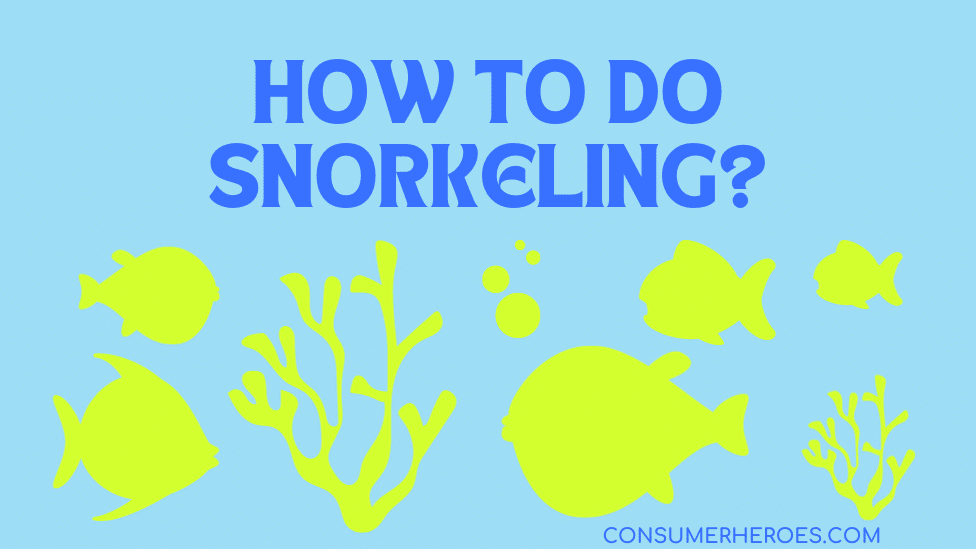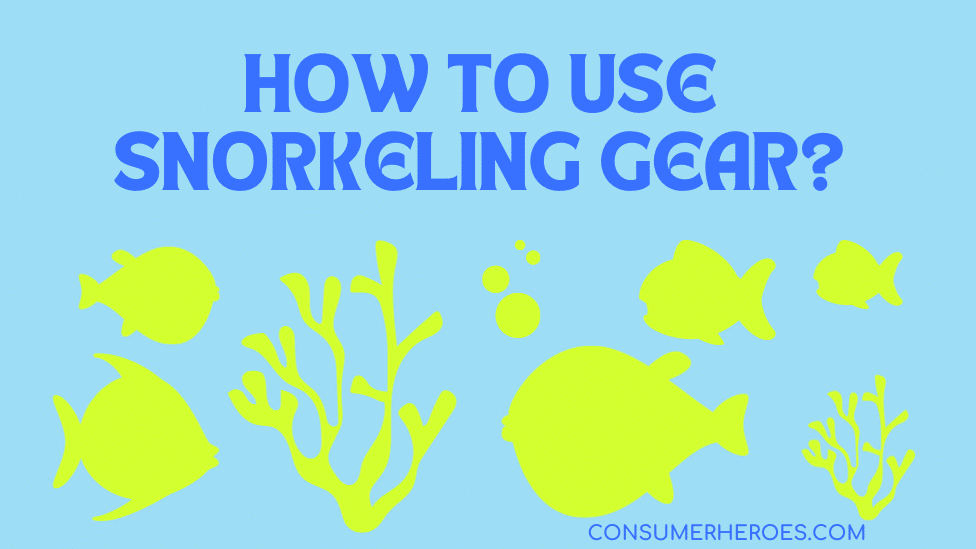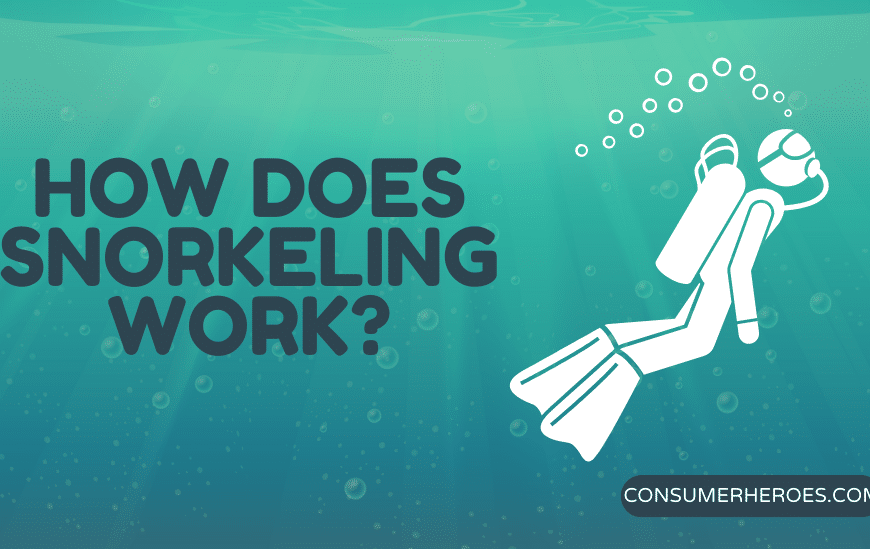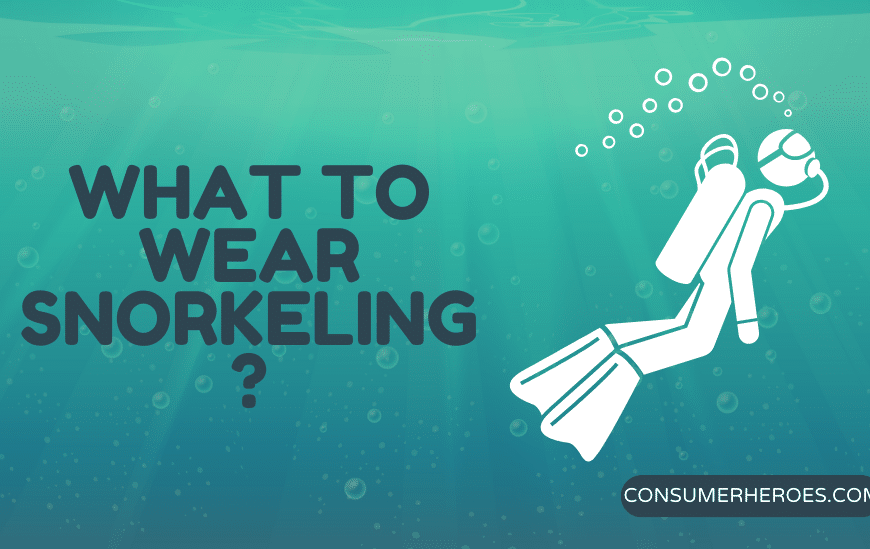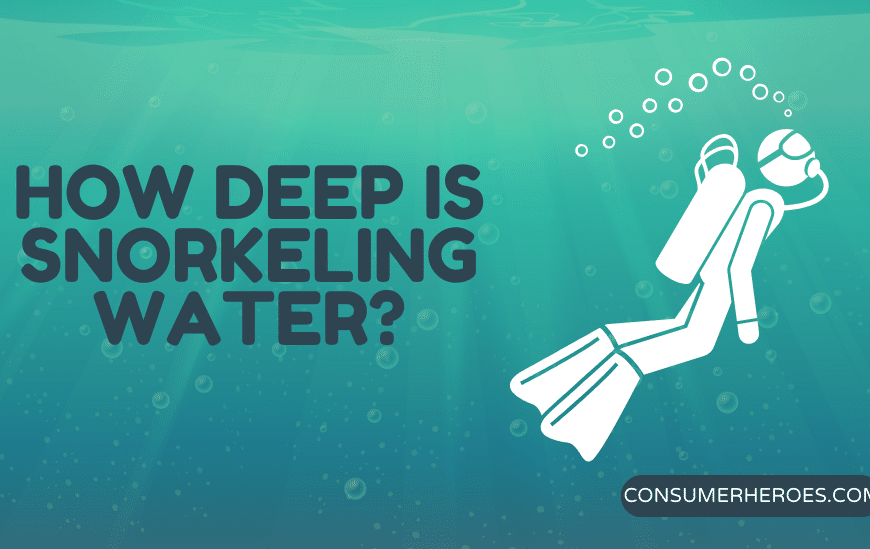Learning how to snorkel can be an exciting and rewarding experience for anyone who loves being in the water. Snorkeling allows you to explore the underwater world and observe marine life up close. However, for those who have never tried it before, snorkeling can also be intimidating.
To learn how to snorkel, it is important to start with the basics. First, you need to choose the right equipment, including a snorkel, mask, and fins. These items should fit properly and be comfortable to wear. Next, you need to learn how to breathe through the snorkel and clear it if water enters. It is also important to practice swimming with fins and getting comfortable with the mask.
Once you have the basics down, you can start practicing in shallow water and gradually work your way to deeper water. It is important to stay relaxed and calm while snorkeling, as this will help you conserve energy and enjoy the experience. With the right equipment, practice, and mindset, anyone can learn how to snorkel and discover the beauty of the underwater world.
Understanding Snorkeling
Basics of Snorkeling
Snorkeling is a popular water activity that involves swimming near the surface of the water while wearing a snorkel mask and fins. It allows you to observe the underwater world and its inhabitants without the need for scuba diving gear. To get started with snorkeling, you need to have basic swimming skills and be comfortable in the water.
Before diving into the water, it is important to familiarize yourself with the basics of snorkeling. One of the most important things to remember is to breathe through the snorkel tube and not through your nose. This can take some getting used to, but with practice, it will become second nature.
It is also important to keep your body horizontal while snorkeling to avoid kicking up sand or disturbing the marine life. You can use your arms to propel yourself forward and adjust your body position as needed. Additionally, it is important to stay aware of your surroundings and avoid touching or disturbing the coral reefs and other marine life.
Equipment Needed
To get started with snorkeling, you will need some basic equipment. This includes a snorkel mask, snorkel tube, and fins. The mask should fit snugly on your face to prevent water from entering and provide a clear view of the underwater world. The snorkel tube should be long enough to reach above the water surface and have a mouthpiece that fits comfortably in your mouth.
Fins are also important for snorkeling as they allow you to move through the water more efficiently and with less effort. They should fit snugly on your feet and be comfortable to wear for extended periods of time.
In addition to the basic equipment, you may also want to consider wearing a wetsuit or rash guard to protect your skin from the sun and abrasive surfaces in the water. A buoyancy vest can also be helpful for beginners who may need extra support in the water.
Overall, snorkeling is a fun and accessible water activity that can be enjoyed by people of all ages and skill levels. With the right equipment and basic knowledge of snorkeling techniques, you can explore the underwater world and discover its beauty and wonder.
Safety Measures
Snorkeling can be a fun and exciting activity, but it is important to take safety measures to ensure a safe and enjoyable experience. Here are some safety tips to keep in mind:
1. Choose the Right Equipment
Choosing the right equipment is essential for a safe snorkeling experience. Make sure to use a well-fitting mask, snorkel, and fins that are appropriate for your skill level. Check that all equipment is in good condition and functioning properly before entering the water.
2. Know Your Limits
It is important to know your limits and not push yourself beyond what you are comfortable with. Snorkeling can be physically demanding, and it is important to take breaks when needed and not overexert yourself.
3. Stay Close to Shore
When snorkeling, it is best to stay close to shore and within designated swimming areas. Avoid swimming in areas with strong currents or waves, and always be aware of your surroundings.
4. Buddy System
Always snorkel with a buddy. This is important for safety reasons, as your buddy can assist you in case of an emergency. Make sure to establish clear communication signals before entering the water.
5. Check Weather Conditions
Check weather conditions before snorkeling, and avoid snorkeling in bad weather. Wind, waves, and currents can make snorkeling dangerous, so it is best to stay out of the water if conditions are not ideal.
6. Respect Marine Life
When snorkeling, it is important to respect marine life and not touch or disturb any animals or plants. This is not only for your safety but also for the safety of the marine environment.
By following these safety measures, you can ensure a safe and enjoyable snorkeling experience.
Snorkeling Techniques
Breathing Techniques
Proper breathing techniques are essential for successful snorkeling. It is important to breathe slowly and deeply through the mouth, keeping the snorkel tube above the water surface at all times. This ensures that the air is fresh and not contaminated by water.
To prevent water from entering the snorkel tube, the snorkeler should exhale forcefully through the mouth when clearing the tube. This will also help to remove any water that may have entered the tube.
Swimming Techniques
Swimming with fins is recommended for snorkeling, as it allows the snorkeler to move more efficiently through the water. The fins should fit snugly on the feet, but not be too tight.
When swimming, the snorkeler should keep the body horizontal and the legs straight. The arms should be used for balance and to propel the body forward.
It is important to avoid touching the coral or any other marine life while swimming. This not only protects the delicate ecosystem but also prevents injury to the snorkeler.
Overall, mastering these snorkeling techniques will help the snorkeler to have a safe and enjoyable experience in the water.
Choosing the Right Location
When it comes to learning snorkeling, choosing the right location is crucial. The location should be safe, calm, and shallow, with clear water so that you can see the marine life and the underwater environment. Here are some factors to consider when choosing the right location for snorkeling:
Water Conditions
The water conditions are the most important factor to consider when choosing a location for snorkeling. The water should be calm, with little or no waves, and the current should be minimal. The water temperature should also be comfortable for the snorkeler. You can check the water conditions by looking at the weather forecast or asking the locals.
Marine Life
The marine life is another important factor to consider when choosing a location for snorkeling. You want to choose a location with a diverse range of marine life, such as colorful fish, coral reefs, and sea turtles. You can research the marine life in the area before choosing a location.
Accessibility
The location should be easily accessible, with parking facilities and amenities such as restrooms and changing rooms. You also want to choose a location that is safe for snorkeling, with no dangerous marine life or underwater hazards.
Popular Snorkeling Locations
Here are some popular snorkeling locations that are suitable for beginners:
- Hanauma Bay, Hawaii
- John Pennekamp Coral Reef State Park, Florida
- Great Barrier Reef, Australia
- Tulum, Mexico
- Maldives
These locations offer calm, clear waters, and a diverse range of marine life. However, it’s important to note that some of these locations may require permits or have entrance fees.
Choosing the right location is essential for a successful snorkeling experience. By considering the water conditions, marine life, accessibility, and popular snorkeling locations, you can find the perfect location for your snorkeling adventure.
Practicing Snorkeling
Pool Practice
Before heading out to the open water, it is important to practice snorkeling in a controlled environment. A pool is a great place to start practicing, as it allows the snorkeler to get comfortable with the gear and breathing techniques.
To begin, the snorkeler should put on their gear and get into the shallow end of the pool. They should practice breathing through the snorkel while keeping their face in the water. It may take some time to get used to breathing through the snorkel, but with practice, it will become more natural.
Once comfortable with breathing, the snorkeler can practice swimming with the fins. It is important to use a slow and steady kick to conserve energy and avoid disturbing the water too much. The snorkeler should also practice diving down and resurfacing, as this will be necessary when exploring reefs or other underwater environments.
Open Water Practice
Once the snorkeler is comfortable with the gear and techniques in a pool, it is time to move on to open water practice. It is important to choose a calm and shallow area for the first few open water sessions.
Before entering the water, the snorkeler should check the conditions and make sure they are comfortable with the depth and visibility. They should also make sure they have a buddy with them for safety.
Once in the water, the snorkeler should practice the same techniques they learned in the pool. They should focus on breathing through the snorkel, using a slow and steady kick, and diving down and resurfacing.
It is important to take breaks as needed and not push beyond their comfort level. With practice, the snorkeler will become more confident and comfortable in the open water.
Overall, practicing snorkeling in a pool and open water can help the snorkeler become more comfortable with the gear and techniques. By taking it slow and steady, the snorkeler can build their skills and confidence for future snorkeling adventures.
Identifying Marine Life
When snorkeling, it’s essential to know how to identify marine life. Here are some tips to help you recognize different species of fish and other creatures:
Fish
Fish come in all colors, shapes, and sizes. Some of the most common fish you’ll see while snorkeling include:
- Clownfish: These small, brightly colored fish are easy to spot with their orange bodies and white stripes.
- Parrotfish: These fish have a distinctive beak-like mouth and come in a variety of colors.
- Moorish idols: These fish have a long, thin body and a distinctive black and white pattern.
Other Creatures
In addition to fish, there are many other creatures you may encounter while snorkeling. Here are a few to keep an eye out for:
- Sea turtles: These gentle creatures are easy to spot with their large shells and flippers.
- Stingrays: These flat, diamond-shaped creatures glide gracefully through the water.
- Jellyfish: These translucent creatures can be dangerous, so it’s important to give them plenty of space.
Remember to always observe marine life from a safe distance and never touch or disturb any creatures you encounter.
Snorkeling Etiquette
When snorkeling, it’s important to follow proper etiquette to ensure a safe and enjoyable experience for everyone involved. Here are a few things to keep in mind:
Respect marine life and their habitats
When snorkeling, it’s important to remember that you are a guest in the marine life’s home. Do not touch or disturb any marine life or their habitats. This includes coral reefs, which are fragile ecosystems that can take years to recover from damage.
Stay a safe distance from other snorkelers
When snorkeling in a group, it’s important to respect each other’s personal space. Stay a safe distance away from other snorkelers to avoid accidentally kicking or hitting them with your fins.
Use proper hand signals
Communication is key when snorkeling. Learn and use proper hand signals to communicate with other snorkelers and your guide. This will help you avoid confusion and ensure that everyone is on the same page.
Don’t litter
Always dispose of your trash properly and avoid littering in the water. This includes not feeding any marine life, as it can disrupt their natural feeding patterns and cause harm to their health.
Follow local rules and regulations
Different snorkeling locations may have different rules and regulations. Be sure to familiarize yourself with these rules before entering the water to ensure a safe and legal snorkeling experience.
By following these basic etiquette rules, you can help ensure a safe and enjoyable snorkeling experience for everyone involved.
Maintaining Your Equipment
To ensure that your snorkeling equipment lasts for a long time, it is essential to maintain it properly. Here are some tips on how to maintain your snorkeling equipment:
Cleaning Your Mask
After each use, rinse your mask with fresh water to remove any salt, sand, or debris. Then, use a mild detergent to clean the mask thoroughly. Rinse it again with fresh water and let it air dry. It is best to store your mask in a protective case to prevent any scratches or damage.
Maintaining Your Snorkel
Rinse your snorkel with fresh water after each use to remove any salt, sand, or debris. If your snorkel has a purge valve, make sure to clean it properly to prevent any blockages. Store your snorkel in a dry and cool place to prevent any mold or mildew growth.
Caring for Your Fins
After each use, rinse your fins with fresh water to remove any salt, sand, or debris. Dry them completely before storing them in a cool and dry place. If your fins have adjustable straps, make sure to adjust them properly to ensure a comfortable fit.
Storing Your Equipment
When storing your snorkeling equipment, make sure to keep it in a dry and cool place. Avoid exposing it to direct sunlight or extreme temperatures. It is best to store your equipment in a mesh bag to allow air circulation and prevent any mold or mildew growth.
By following these simple tips, you can ensure that your snorkeling equipment lasts for a long time and provides you with a comfortable and enjoyable snorkeling experience.
Advanced Snorkeling Tips
For those who have mastered the basics of snorkeling, there are several advanced techniques that can enhance the experience and make it even more enjoyable.
Equalizing Techniques
Equalizing is the process of equalizing the pressure in the ears and sinuses with the surrounding water pressure. This is essential for deep diving and can prevent discomfort and even injury. Some techniques for equalizing include:
- Pinching the nose and blowing gently
- Swallowing
- Moving the jaw from side to side
Breath-Holding Techniques
Being able to hold your breath for longer periods of time can allow for deeper dives and longer exploration. Some techniques for improving breath-holding ability include:
- Practicing deep breathing and relaxation techniques
- Performing breath-holding exercises such as static apnea
- Increasing physical fitness and lung capacity through regular exercise
Advanced Gear
Investing in advanced snorkeling gear can greatly enhance the experience. Some gear to consider includes:
- Full-face snorkel masks for a wider field of vision and easier breathing
- Fins for increased speed and maneuverability
- Wet suits for colder water temperatures and longer dives
By incorporating these advanced techniques and gear, snorkelers can take their skills to the next level and fully enjoy the beauty and wonder of the underwater world.

